Marijuana legalization wrong way to end war on drugs
By Robert L. DuPont 2 p.m. Sept. 4, 2013
The Department of Justice recently announced that it will not uphold federal drug laws in the face of marijuana legalization in Washington state and Colorado, giving these states the green light to move forward with their regulatory plans for marijuana. The United States is now the only country in the world to legalize the commercial production, sale and use of marijuana.
Legalization promises an end to the “war on drugs,” to stop the violence on both sides of the U.S.-Mexico border, empty prisons and,through taxation and regulation, yield much-needed government revenue. But trafficking is two-way. Drugs flow into the United States to feed American drug demand, while guns flow out. Why is no one suggesting that because of Mexican demand for guns that country must legalize the sale of guns from the United States? Simple: a free flow of weapons would be too dangerous – just as would a free flow of drugs. Before jumping on the legalization bandwagon, serious consideration must be given to the resulting social costs.
Thanks to a well-funded and impressively executed, decades-long campaign to normalize marijuana use, much of the public believes that marijuana use is harmless. A national poll reports that more than 50 percent of respondents support marijuana legalization. What the public does not hear – or believe – is the truth shown by a growing body of scientific evidence about the negative effects of marijuana use.
The human brain is exquisitely vulnerable to drugs, including marijuana. Drugs hijack the brain’s reward system, producing a more powerful reward than any natural behavior. Nine percent of all marijuana users become addicted; this figure increases to 16 percent when use begins in the teen years. There is a bidirectional relationship between substance use, including marijuana, and academic failure and dropout from both high school and college. Heavy marijuana use in the teenage years is associated with an eight-point loss in IQ. The highest rates of marijuana use are among young people, the most vulnerable to its negative effects. Two-thirds of teens who have used marijuana and more than three-quarters of teenage heavy marijuana users said that marijuana legalization would make them more likely to use it.
It is clear that legalization increases drug use. In 2011, 52 percent of Americans ages 12 and older used alcohol in the last 30 days. The equivalent figure for tobacco is 27 percent. For all illegal drugs combined the figure is just 9 percent (for marijuana it is 7 percent). Drug legalization will push the use of currently illegal drugs into the usage patterns of the two legal drugs. What sort of country will we have then?
Colorado and Washington are now serving as test cases for marijuana legalization. Legalization will extend the damage done by the proliferation of “medical” marijuana that is now available in Colorado, Washington and 18 other states and the District of Columbia. Rates of marijuana use by both youth and adults have increased. Colorado has seen widespread diversion of medical marijuana among adolescents in drug-abuse treatment as well as increases in pediatric emergency-department visits for marijuana. National trend data shows that from 2006 to 2011, overall traffic fatalities have decreased, but marijuana-related fatalities in Colorado have increased each year. These changes are but the tip of the iceberg. The crisis caused by marijuana legalization will be hastened by the certain entry of big business into marijuana production and sale to create powerful economic interests to reinforce current political interests, a pattern that mirrors the current status of alcohol and tobacco.
Given the federal government’s response to legalization, it is nearly certain that other states will legalize marijuana. But the end of this drug-policy story is not the legalization of marijuana across the United States. It is the legalization of all drugs of abuse – the end-goal of the pro-drug lobby that is working hard to legalize marijuana today. Every argument used in support of marijuana legalization is used to support the legalization of the other drugs.
The solution to the modern drug epidemic is not to surrender by legalizing marijuana or other drugs. These policies increase drug use,addiction and the related social costs. To protect the health, welfare and economic well-being of the entire nation, the goal of drug policy must be to find effective and affordable ways to reduce drug use that are compatible with modern values and laws. Reducing the demand for illegal drugs will improve public health and safety and reduce drug trafficking and the related violence.
DuPont, M.D., is president, Institute for Behavior and Health, and former director of the National Institute on Drug Abuse.© Copyright 2013 The San Diego Union-Tribune, LLC. An MLIM LLC Company. All rights reserved.

